Broadband for Business: A Path Forward for the Capital Region Report (Spring 2024)
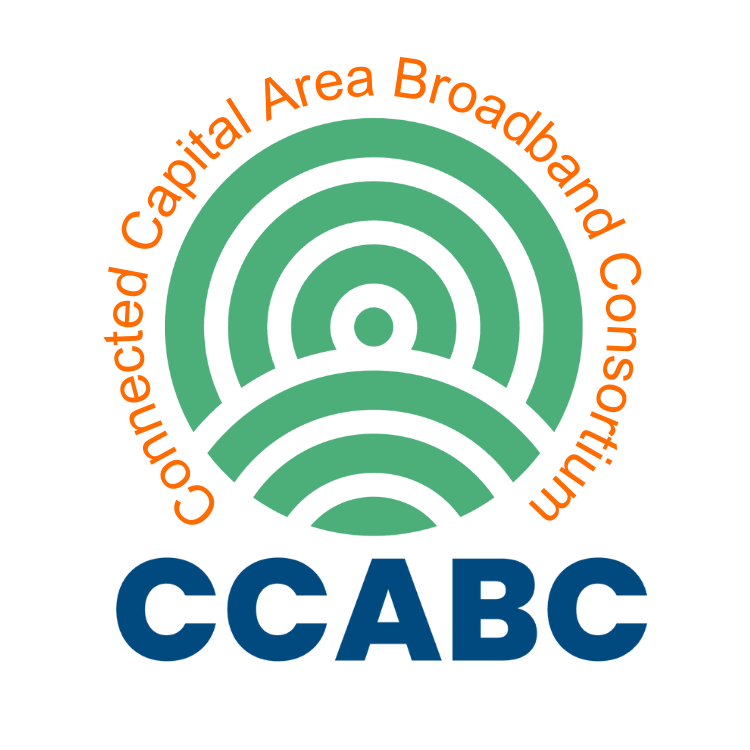

The Greater Sacramento Region, home to the Capital of the fifth largest
economy in the world, has a persistent Digital Divide crossing geographies
and economic sectors, worsened by the pandemic. In response, Valley Vision
received an economic recovery grant from the U.S. Economic Development
Administration (EDA) to prepare the region’s first-ever Broadband for Business
plan and resource guide.
This report documents broadband gaps for businesses throughout the region,
which call for our collective attention and action. The report also includes a
wealth of resources for businesses and those serving businesses and workers.
Broadband for Business: A Path Forward for the Capital Region

For businesses across the Greater Sacramento region, the COVID-19 pandemic spotlighted concerns regarding businesses’ access to reliable and affordable broadband, as well as digital skills and training needed to thrive and function optimally. Valley Vision received a grant from the U.S. Economic Development Administration to identify recommendations and create a roadmap for urban, suburban and rural areas in Sacramento, Sutter, Yuba, and Yolo Counties.
The priorities set by the report, Broadband for Business: A Path Forward for the Capital Region, accelerate broadband adoption and implementation of cutting-edge internet-based tools and platforms for business operations and assist communities in economic recovery.
Valley Vision conducted various project activities, in order to develop a regional assessment of key findings and recommended strategies, tools, and resources, subdivided by pivotal stakeholders, such as:
- Connecting with regional Internet Service Providers to identify business internet service levels, and collaborate with regional stakeholders on local broadband and digital service needs;
- Conducting a business tier broadband gaps/needs analysis of future proof broadband services, digital and online tools, platforms, resources, and digital training to enable businesses to adopt and implement cutting-edge online business operations;
- Creating a first-ever overlaying of local mapping data for areas zoned for business uses with data from the California Public Utilities Commission showing locations with inadequate broadband service.
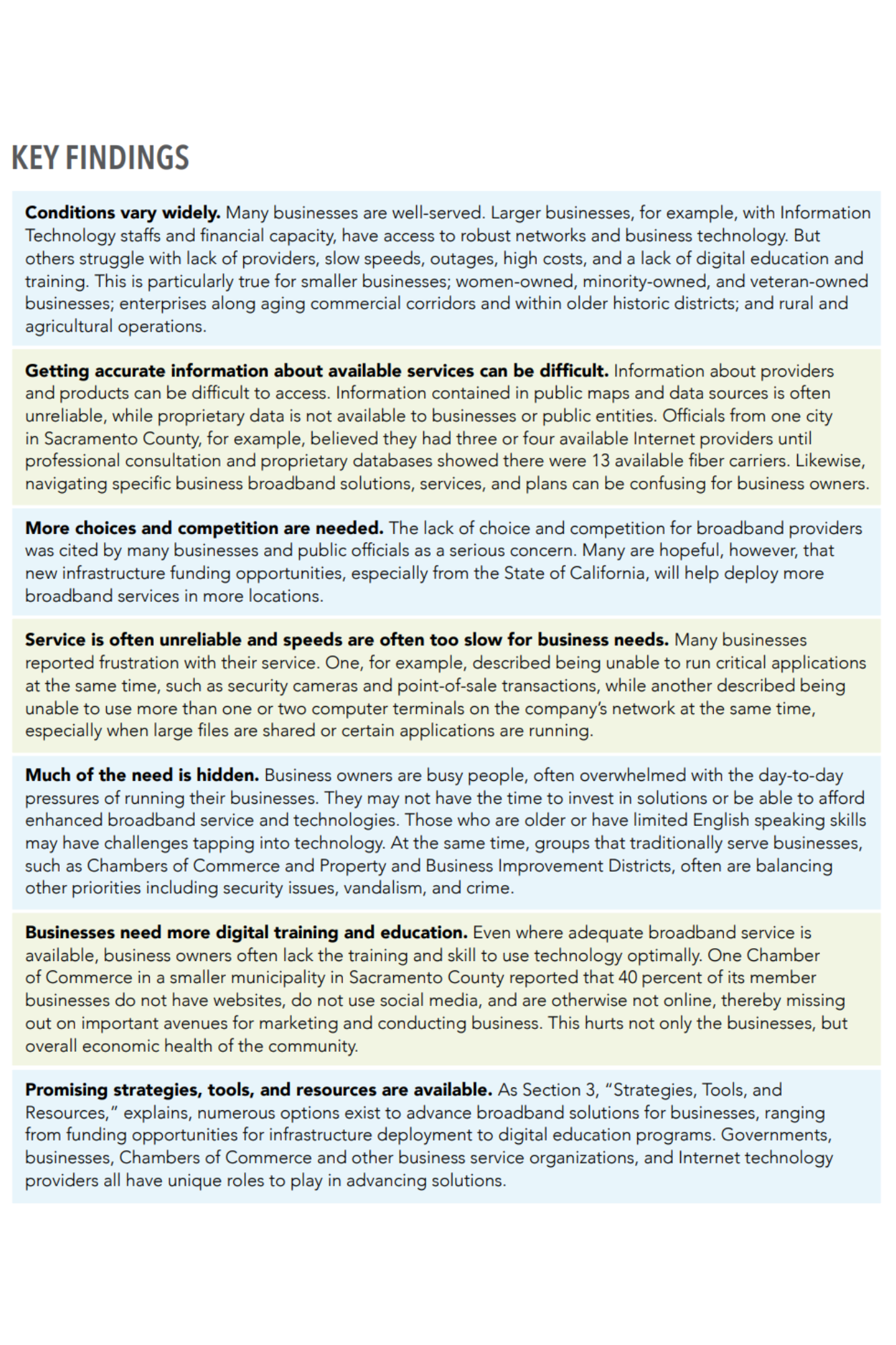
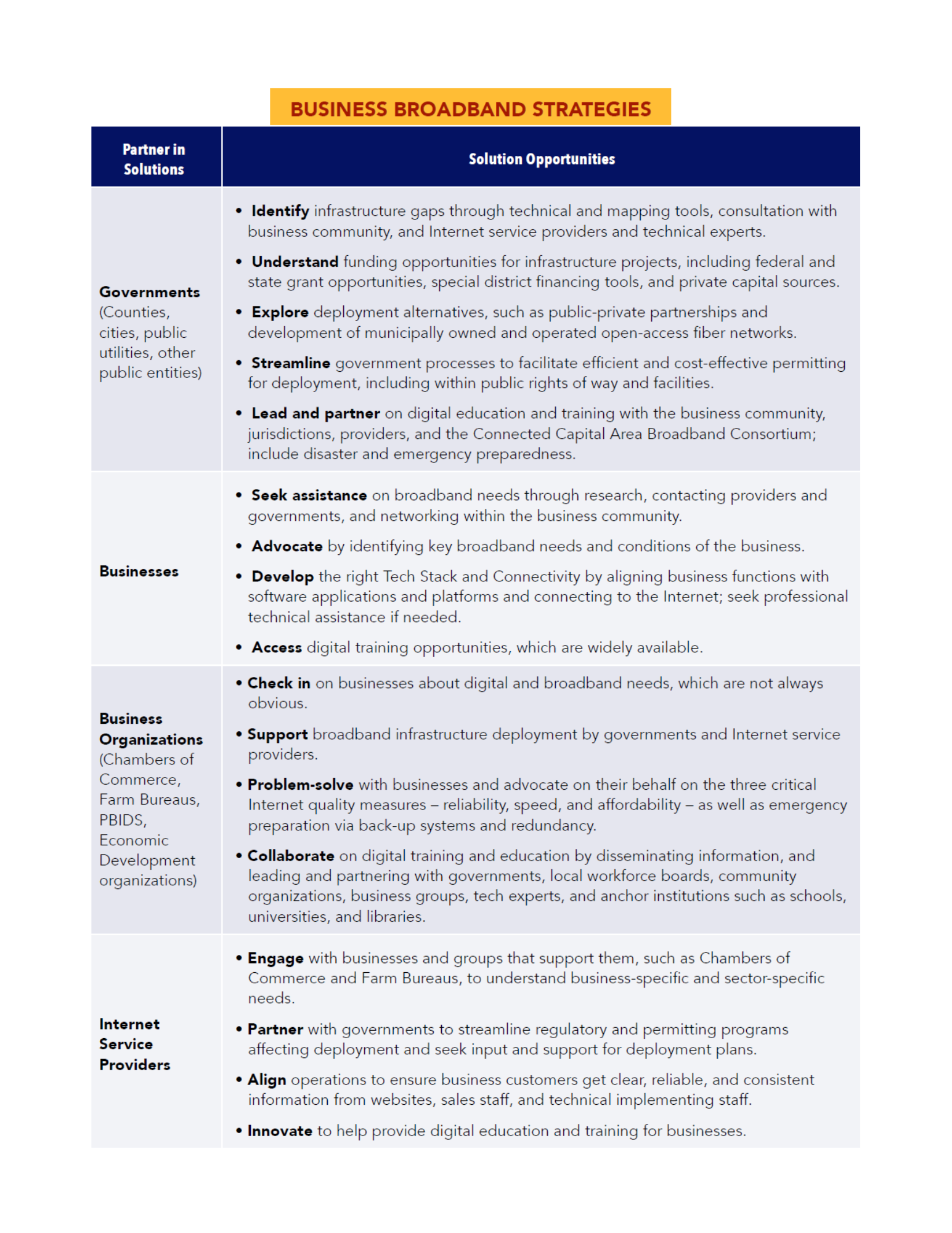
Broadband for Business: A Path Forward for the Capital Region
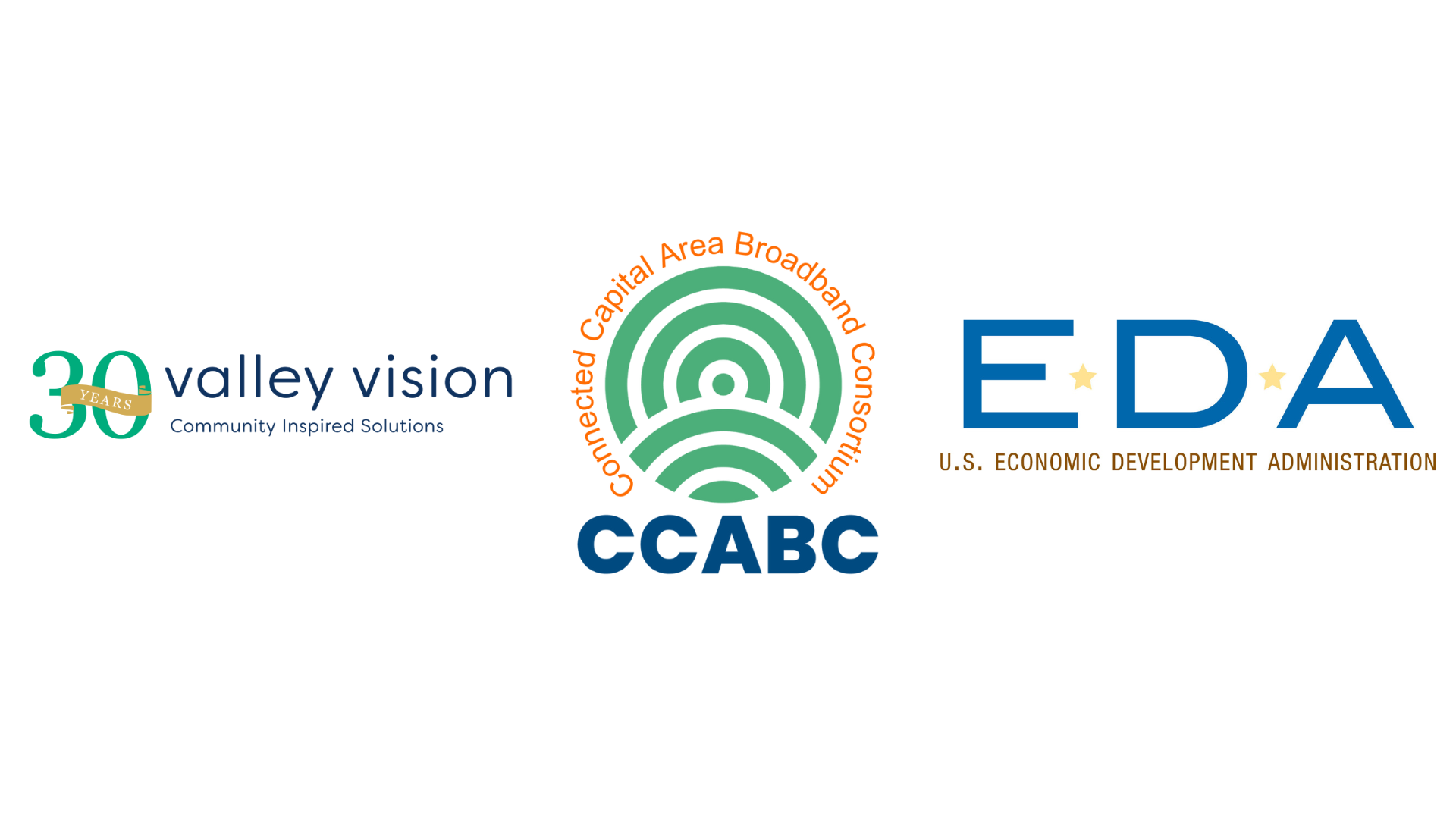
Affordable Connectivity Program (ACP) Enrollment Event
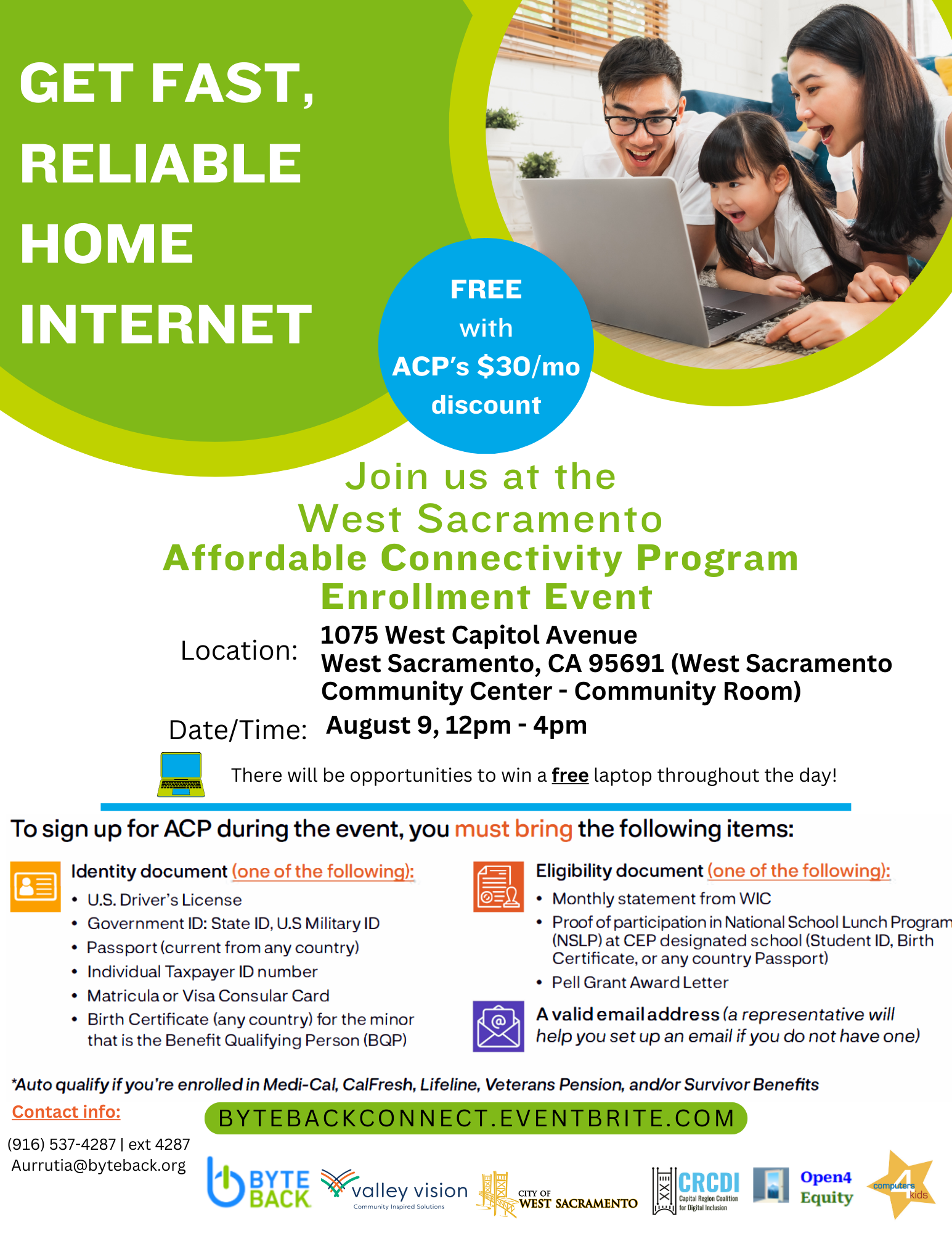
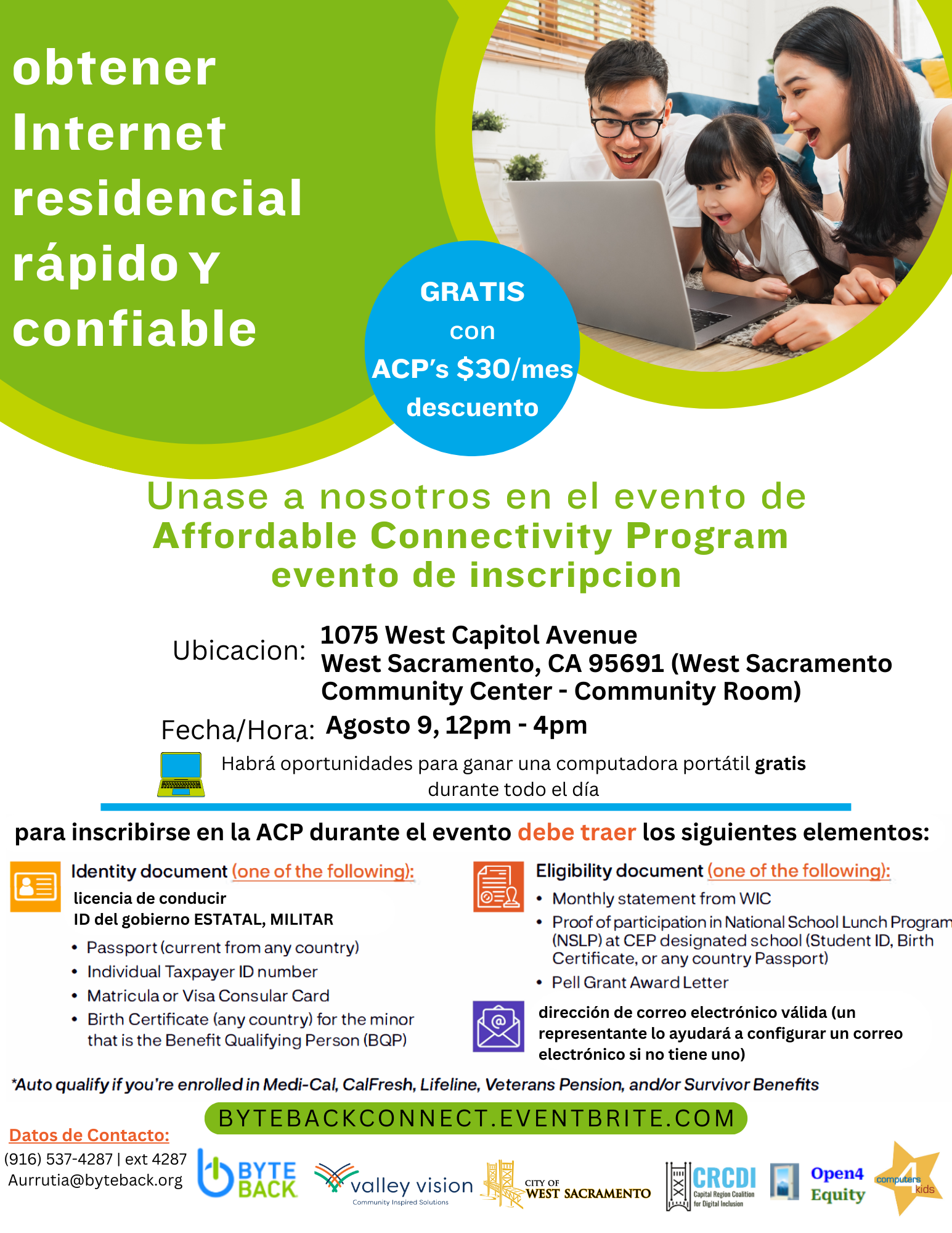
Valley Vision, in partnership with the City of West Sacramento and local partners, will be hosting an Affordable Connectivity Program (ACP) enrollment event.
ACP is a federal benefits program which provides households with a monthly $30 discount ($75 for tribal households) towards their internet service bill, along with a one-time $100 discount on eligible devices. Households which participate in any of the following programs are eligible to enroll in ACP:
- CalFresh or SNAP, formerly known as Food Stamps;
- Medi-Cal;
- Special Supplemental Nutrition Program for Women, Infants and Children (WIC);
- Supplemental Security Income (SSI);
- Federal Public Housing Assistance (FPHA);
- Veterans Pension and Survivors Benefit;
- Free and Reduced-Price School Lunch Program or School Breakfast Program, including at U.S. Department of Agriculture (USDA) Community Eligibility Provision schools;
- Received a Federal Pell Grant during the current award year
- Bureau of Indian Affairs General Assistance;
- Head Start (only households meeting the income qualifying standard);
- Tribal Temporary Assistance for Needy Families (Tribal TANF);
- Food Distribution Program on Indian Reservations
Additional Qualifications include:
- Household income at or below 200% of the Federal Poverty Guidelines
All participants who attend the event and apply for ACP will be eligible to enter a raffle for a free laptop computer. One raffle winner will be chosen each hour, additionally all participants will have the opportunity to receive free or discounted devices.
Connected Capital Area Broadband Consortium (CCABC) Memo – July 2023
Capital Region Coalition for Digital Inclusion (CRCDI) Quarterly Meeting – June 23, 2023
Access the meeting recording HERE.
The Capital Region Coalition for Digital Inclusion’s (CRCDI) Quarterly Meeting took place on Friday, June 23, 2023. The meeting involved digital equity updates from the California Department of Technology (CDT) and National Telecommunications and Information Administration (NTIA), such as the Digital Equity Survey, DEEM Tool, and BEAD funding updates.
Register for upcoming CRCDI Quarterly Meetings HERE.
Capital Region Coalition for Digital Inclusion (CRCDI) Quarterly Meeting – March 10, 2023
Access the meeting recording HERE.
The Capital Region Coalition for Digital Inclusion’s (CRCDI) Quarterly Meeting took place on Friday, March 10, 2023. The event featured Amanda Bergson-Shilcock from the National Skills Coalition, presenting on “Closing the Digital Skills Divide” – a report which found 92% of jobs in the U.S. labor market require digital skills. The Coalition also provided regional broadband and digital inclusion announcements, and discuss important updates in state and federal funding, along with the state’s digital equity plan.
Register for upcoming CRCDI Quarterly Meetings HERE.
Capital Region Coalition for Digital Inclusion

The Capital Region Coalition for Digital Inclusion, formerly the Sacramento Coalition for Digital Inclusion, started as part of community discussions following the release of a Brookings Institute report on the Sacramento region in the fall of 2018. With the goal of creating a prosperous Sacramento region, the discussion of digital equity was one of the most-spoken components, and in January 2019, during the Sacramento Digital Inclusion Summit hosted by the Sacramento Public Library, the Coalition was created.
The founding Steering Committee includes the City of Sacramento, Sacramento Public Library, Los Rios Community College District, California State University at Sacramento, Capital Region Workforce Boards, Clear Strategies LLC, and Valley Vision.
In its first stages, the Coalition conducted an assessment of needs with community input, built collaborative relationships across industries, and published an initial report which determined digital access to be achieved through affordable Internet and devices, along with digital literacy/skills.
The start of COVID-19 pandemic highlighted the digital inclusion gap, and pushed the Coalition further towards efforts to bridge the digital divide. To support the Coalition’s efforts, Valley Vision has been successful in securing funding to continue and expand this valuable work through the Capital Region Workforce Boards, SMUD, Union Bank, and community partners and stakeholders.
Following the Coalition’s expansion from Sacramento County into the Capital Region Workforce Board 9 county region of Alpine, Colusa, El Dorado, Glenn, Placer, Sacramento, Sutter, Yolo, and Yuba County, Valley Vision partnered with mohuman, a non-profit connecting low-income communities with digital resources, to create the Capital Region Digital Inclusion Portal. The centralized platform was developed with the goal to be a source for community members and organizations to find and upload resources for computing devices, internet connectivity, and digital skill building – including free and low cost computers, internet services, foundational and career-specific digital skill building tools and training, and more.
Capital Region Coalition for Digital Inclusion (CRCDI) Quarterly Meeting – December 9, 2022
Access the meeting recording HERE.
The Capital Region Coalition for Digital Inclusion’s (CRCDI) Quarterly Meeting took place on Friday, December 9, 2022. The event featured a Year-in-Review reflection of the Coalition and focused on Affordable Connectivity Program (ACP), featuring enrollment data for the Capital Region and several guest speakers offering insight on best practices and methods for helping communities get enrolled in ACP.
Register for upcoming CRCDI Quarterly Meetings HERE.
Capital Region Coalition for Digital Inclusion (CRCDI) Quarterly Meeting – September 23, 2022
Access the meeting recording HERE.
The Capital Region Coalition for Digital Inclusion’s (CRCDI) Quarterly Meeting took place on Friday, September 23, 2022. The event highlighted digital navigators through a panel discussion consisting of local, state, and national digital navigator programs. The role of digital navigators is essential to ensuring digital equity, as digital navigators address the whole digital inclusion process — home connectivity, devices, and digital skills — with community members through repeated interactions.
Register for upcoming CRCDI Quarterly Meetings HERE.
Quarterly Meeting: Capital Region Coalition for Digital Inclusion
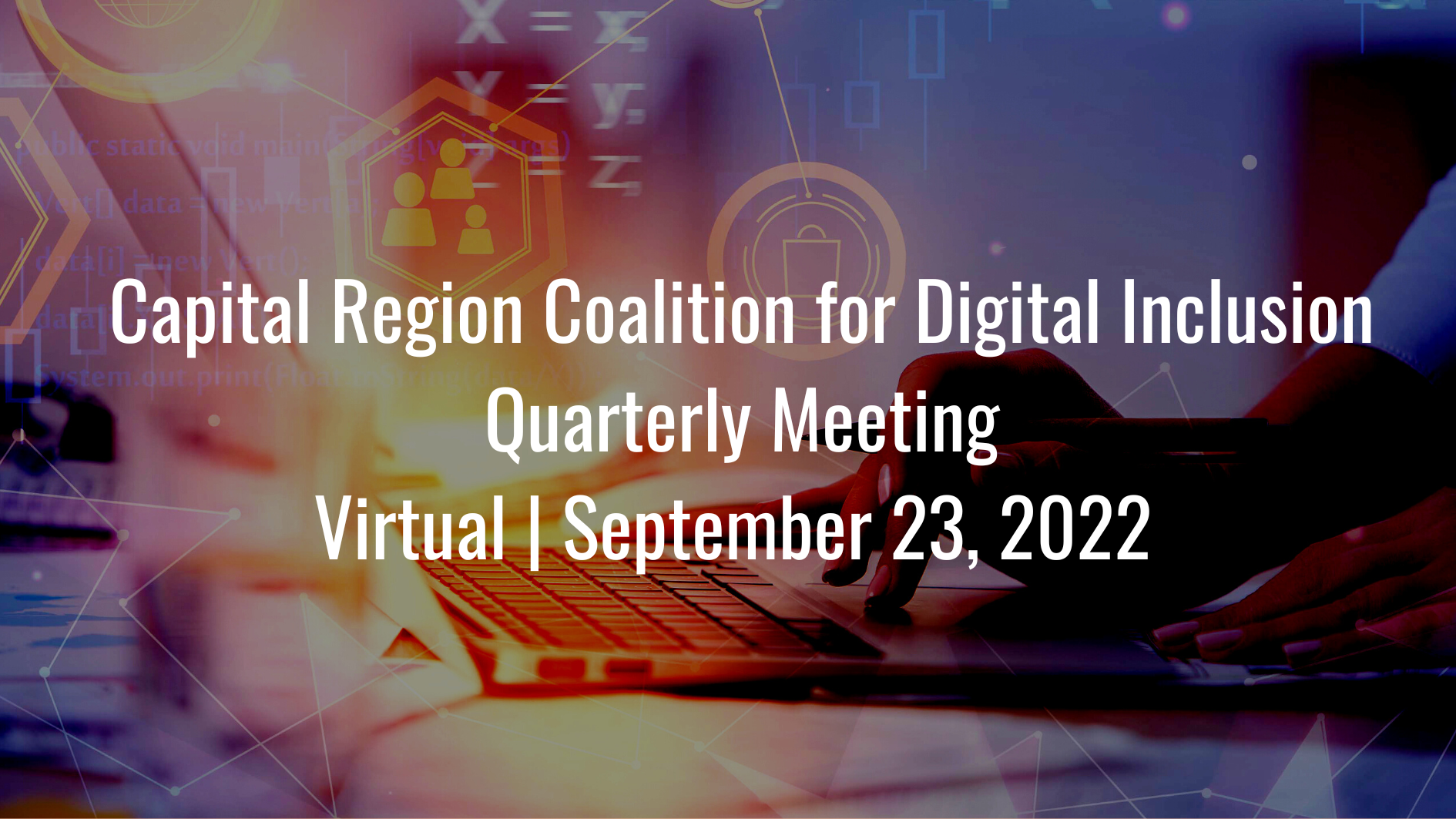
Please join us for our next quarterly virtual meeting of the Capital Region Coalition for Digital Inclusion on September 23rd, from 11 am to 12:30 pm. This meeting will delve into the importance of digital navigators for our region – highlighting local and national programs. Join us to collaborate on this key effort to close the digital divide.
We appreciate your commitment to supporting digital inclusion for all capital region community members. We look forward to connecting with you on September 23rd.
Capital Region Coalition for Digital Inclusion (CRCDI) Quarterly Meeting – June 24, 2022
Access the meeting recording HERE.
The Capital Region Coalition for Digital Inclusion’s (CRCDI) Quarterly Meeting took place on Friday, June 24, 2022. The event featured funding opportunities, tools for educating community members on their internet speeds, service bills, and rights, and how to use the CRCDI Digital Inclusion Portal to connect the community to local digital inclusion and digital literacy resources.
Register for upcoming CRCDI Quarterly Meetings HERE.
Quarterly Meeting: Capital Region Coalition for Digital Inclusion
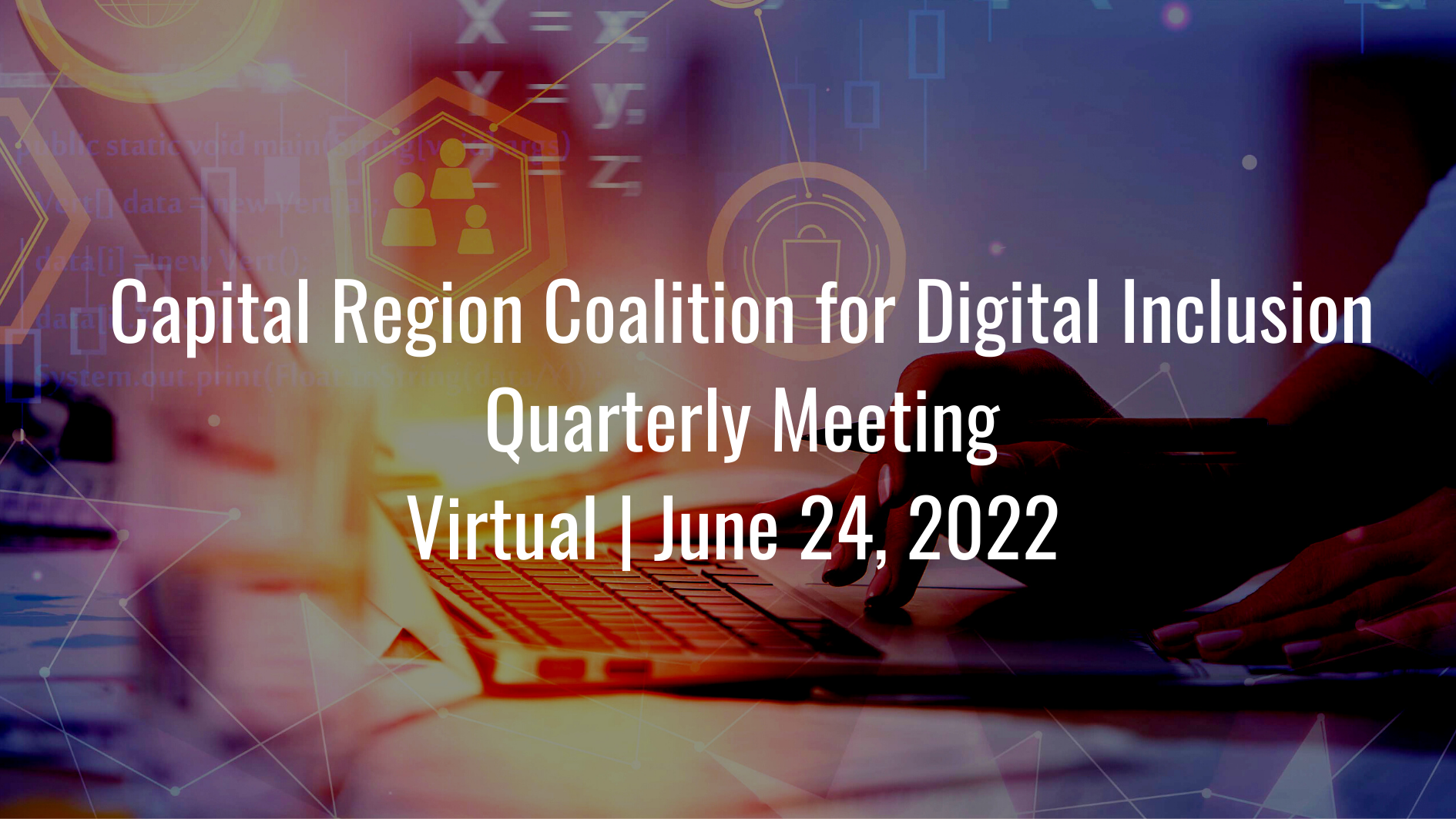
We invite you to join the Capital Region Coalition for Digital Inclusion’s Quarterly Meeting on June 24, 2022, from 11 AM – 12:30 PM. We look forward to sharing a new tool the Coalition is developing, which will assist community members in reading their broadband bills and understanding their internet speed. We will launch this tool at our next meeting, and look forward to seeing its impact!
Registration for this event can be found here:
https://us02web.zoom.us/meeting/register/tZMof-iopjwiHdcAmDsCQNIQHWq3meUqdUtB